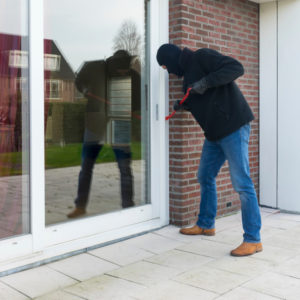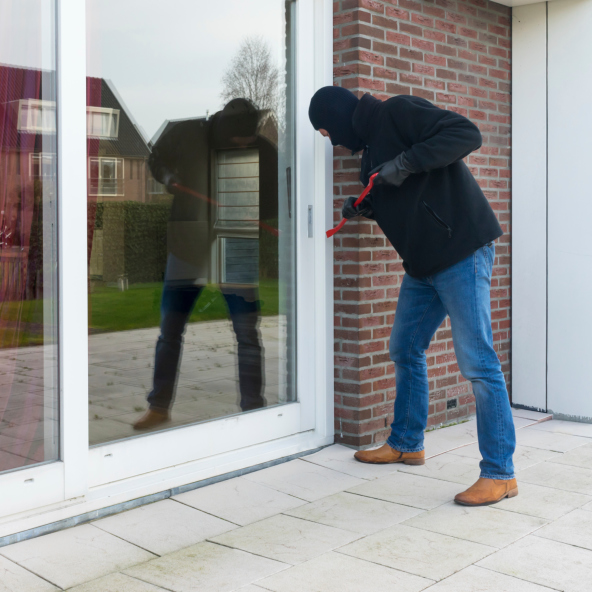Increasing your home’s protection against intruders can save you money on your homeowner’s insurance premiums.
There are many ways to increase the safety of your home. You could build a panic room for protection from robbers or kidnappers, among other things.
But what about protecting your belongings when you’re not home? Perhaps you really don’t want to install an alarm-system—or maybe you do. Either way, here are some no-cost and low cost tricks to better protect you and your property, and help keep your belongings away from thieves.

Outside the Home
Landscaping is the first thing a burglar sees—and the first thing he will assess. To make it harder for a burglar to hide and gain entry to your home:
- Prune lower limbs from any large trees
- Trim bushes to keep burglars from using them for cover
- Move any decorative trellises away from windows or porch roofs so they cannot be climbed for second-floor access
- Consider planting thorny bushes below first-floor windows. Be sure they are close enough to the house that an adult could not wedge between a bush and the house to force open a window
- Remove any trees or bushes located beside exterior doors. This foliage can hide a burglar from passing cars and hide intruders from your sight when you answer the door
- Secure all ladders and tools inside the house, not inside a garden shed
- If your yard is dim at night, install the brightest, biggest lights you can afford near all entries to your house—and use them! Turn them on when you leave the house at night; set up motion detectors to turn them on when you are away
Inside the Home
Windows provide easier access for criminals than doors. Here are some tips to keep burglars away from your windows:
- Buy special window locks at your hardware store for all first-floor windows and any second-floor windows that are accessible from a porch or garage roof. DO NOT hang the keys on hooks or nails beside the window. Crooks know this routine. They will simply break a window pane and reach for the keys (Be sure, however, that the whole family knows where the keys are, in case of emergency).
- Never climb in a window if you forget your key. Consider leaving a key with a trustworthy neighbor for emergency use. Even amateur burglars can figure out which window provides the easiest access, especially if they’ve seen you enter the house this way
- For sliding windows, use the same techniques as for sliding doors, below
Some burglars like to enter through the front door, like a guest. Here are some ways to discourage this sort of burglar:
- Use solid-core wood or metal doors; hollow-core doors are easily kicked in. The door should fit the frame snugly, with no more than 1/8 inch between door and jamb. If the gap is larger, replace the door, or install a heavy-gauge metal strip available at a hardware store.
- Replace doors with decorative glass windows or panels, or install break-resistant plastic panes. Installing a decorative grille over the glass can also help.
- If an entry door has outside hinges, rehang it with inside ones. If that’s impossible, use pinless hinges. Burglars can pop pins and remove the door to enter.
- Make sure locks on all sliding glass doors are sturdy. Then use a solid stick of wood or broom handle in the closed door’s track for added reinforcement.
- Adjust door rollers so the door cannot be lifted off track.
A Few More Hints:
- Close your garage door when you’re away. An empty garage shouts “No one’s home!” Cover garage windows completely with shades or curtains so no one will know whether or not your car is inside.
- Don’t leave notes on entry doors. You wouldn’t leave notes if you were home, so this is a clear indication to a burglar that you are not there.
- Don’t hide keys in the yard; burglars recognize this as common practice.
